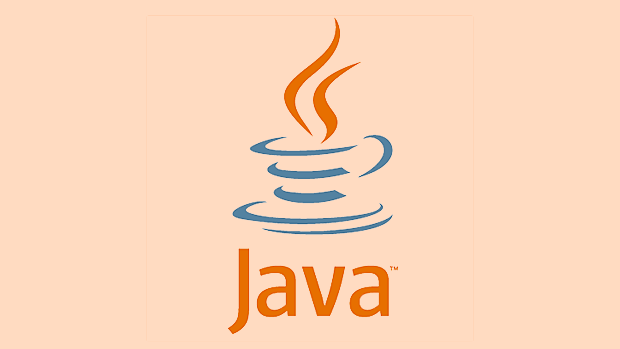The Java Memory Model (JMM) defines visibility and ordering guarantees in multithreaded programs; 1. The happens-before relationship ensures that writes are visible to other threads when established through rules like program order, monitor locks, volatile variables, thread start/join, and transitivity; 2. Without synchronization, threads may not see updated values due to caching or reordering; 3. synchronized blocks provide mutual exclusion and visibility; 4. volatile variables ensure direct memory access and prevent reordering; 5. final fields enable safe publication of immutable objects; 6. Common misconceptions include underestimating the role of synchronization for visibility and assuming atomicity for long/double without volatile; always establish a happens-before link between writes and reads in concurrent code to ensure correctness.

The Java Memory Model (JMM) is a critical but often misunderstood part of the Java platform. It defines how threads interact through memory and what guarantees are provided for shared data access in a multithreaded environment. Understanding the JMM is essential for writing correct, high-performance concurrent code — especially when dealing with low-level concurrency constructs or trying to reason about visibility and ordering of operations across threads.

Let’s break down the JMM and its key guarantees in practical terms.
What Is the Java Memory Model?
The Java Memory Model is not about heap or stack layout — it’s a specification that describes how Java threads interact with memory, particularly with respect to shared variables. It defines the conditions under which a thread is guaranteed to see a value written by another thread.

Without the JMM, modern hardware optimizations like CPU caches, out-of-order execution, and compiler reordering could make multithreaded programs unpredictable and non-portable. The JMM provides a consistent abstraction over these underlying complexities.
At its core, the JMM answers two key questions:

- When does a write to a variable by one thread become visible to another thread?
- In what order do memory operations appear to execute across threads?
Key Concepts: Happens-Before, Visibility, and Ordering
The central mechanism the JMM uses to provide guarantees is the happens-before relationship. This is not a timing guarantee — it’s a partial ordering of operations that ensures visibility and prevents certain reorderings.
If one action happens-before another, then the first is guaranteed to be visible to and ordered before the second.
Here are the primary rules that establish happens-before relationships:
-
Program order rule: Each thread has a happens-before relationship between actions in the order they appear in the code.
int a = 1; // happens-before int b = 2; // this
Monitor lock rule: An unlock on a monitor (e.g., exiting a
synchronizedblock) happens-before every subsequent lock on the same monitor.synchronized(lock) { data = 42; // written under lock } // unlock → happens-before next lockVolatile variable rule: A write to a
volatilevariable happens-before every subsequent read of that same volatile variable.volatile boolean ready = false; // Thread 1 data = 100; ready = true; // volatile write // Thread 2 if (ready) { // volatile read System.out.println(data); // guaranteed to see 100 }Thread start rule: A call to
Thread.start()happens-before any actions in the started thread.Thread join rule: All actions in a thread happen-before the return from that thread’s
join()method.Transitivity: If A happens-before B, and B happens-before C, then A happens-before C.
These rules allow you to build chains of visibility across threads without explicit synchronization every step of the way.
The Problem: Visibility Without Synchronization
Consider this example:
// Shared variables
int data = 0;
boolean ready = false;
// Thread 1
data = 1;
ready = true;
// Thread 2
while (!ready) { }
System.out.println(data);You might expect this to print 1. But without synchronization, there is no guarantee that Thread 2 will ever see the updated value of ready, or that when it does, it will see the updated data.
Why?
- The compiler or CPU might reorder the writes in Thread 1 (
ready = truebeforedata = 1). - Thread 2 might cache
readyin a register and never re-read it. - Even if
readybecomestrue,datamight still be0due to lack of visibility.
This is where the JMM steps in — it says: unless you use synchronization mechanisms defined by the model, you get no visibility guarantees.
How Synchronization Provides Guarantees
The JMM gives you tools to establish happens-before relationships. Here’s how different constructs help:
1. synchronized Blocks
Using synchronized ensures:
- Mutual exclusion.
- Visibility: All writes before releasing a lock are visible to any thread acquiring the same lock.
synchronized(this) {
data = 1;
ready = true;
}
// unlock → all prior writes visible to next synchronized block2. volatile Variables
Declaring a variable volatile ensures:
- Reads and writes are directly to/from main memory (no local caching).
- No reordering of operations around the volatile access (via memory barriers).
- Write happens-before subsequent read.
Use volatile when you need visibility but not atomicity (e.g., flags).
3. final Fields and Safe Publication
The JMM gives special treatment to final fields. If an object is properly constructed (i.e., this doesn’t escape during construction), then:
- Once a thread sees a reference to the object, it also sees the correctly initialized values of its
finalfields. - This enables safe publication without additional synchronization.
public class ImmutableObject {
final int value;
public ImmutableObject(int value) {
this.value = value; // guaranteed visible
}
}This is why immutable objects are thread-safe by default when safely published.
Common Misconceptions
- "Synchronization is only for atomicity" → No. It’s also for visibility and ordering.
-
"64-bit writes (long/double) are always atomic" → Only if not
volatile. The JMM allows them to be split withoutvolatile. - "Local variables don’t need synchronization" → True for locals, but if they reference shared mutable state, the data still needs protection.
Practical Takeaways
To write correct concurrent Java code:
- Always use proper synchronization when sharing data between threads.
- Prefer higher-level concurrency utilities (
java.util.concurrent) over rawsynchronizedorvolatilewhen possible. - Use
volatilefor simple state flags. - Use
finalfields to simplify thread safety in immutable objects. - Understand that no synchronization = no visibility guarantees, even if code “seems to work” in testing.
The Java Memory Model isn’t just academic — it’s the foundation of reliable concurrency in Java. While you don’t need to memorize every rule, knowing how happens-before works lets you reason about correctness and avoid subtle bugs that only appear under heavy load or on certain hardware.
Basically: if you're sharing data across threads, make sure there's a happens-before link between the write and the read — otherwise, you're coding by luck.
The above is the detailed content of A Deep Dive into Java Memory Model and its Guarantees. For more information, please follow other related articles on the PHP Chinese website!

Hot AI Tools

Undress AI Tool
Undress images for free

Undresser.AI Undress
AI-powered app for creating realistic nude photos

AI Clothes Remover
Online AI tool for removing clothes from photos.

Clothoff.io
AI clothes remover

Video Face Swap
Swap faces in any video effortlessly with our completely free AI face swap tool!

Hot Article

Hot Tools

Notepad++7.3.1
Easy-to-use and free code editor

SublimeText3 Chinese version
Chinese version, very easy to use

Zend Studio 13.0.1
Powerful PHP integrated development environment

Dreamweaver CS6
Visual web development tools

SublimeText3 Mac version
God-level code editing software (SublimeText3)

Hot Topics
 Differences Between Callable and Runnable in Java
Jul 04, 2025 am 02:50 AM
Differences Between Callable and Runnable in Java
Jul 04, 2025 am 02:50 AM
There are three main differences between Callable and Runnable in Java. First, the callable method can return the result, suitable for tasks that need to return values, such as Callable; while the run() method of Runnable has no return value, suitable for tasks that do not need to return, such as logging. Second, Callable allows to throw checked exceptions to facilitate error transmission; while Runnable must handle exceptions internally. Third, Runnable can be directly passed to Thread or ExecutorService, while Callable can only be submitted to ExecutorService and returns the Future object to
 Asynchronous Programming Techniques in Modern Java
Jul 07, 2025 am 02:24 AM
Asynchronous Programming Techniques in Modern Java
Jul 07, 2025 am 02:24 AM
Java supports asynchronous programming including the use of CompletableFuture, responsive streams (such as ProjectReactor), and virtual threads in Java19. 1.CompletableFuture improves code readability and maintenance through chain calls, and supports task orchestration and exception handling; 2. ProjectReactor provides Mono and Flux types to implement responsive programming, with backpressure mechanism and rich operators; 3. Virtual threads reduce concurrency costs, are suitable for I/O-intensive tasks, and are lighter and easier to expand than traditional platform threads. Each method has applicable scenarios, and appropriate tools should be selected according to your needs and mixed models should be avoided to maintain simplicity
 Understanding Java NIO and Its Advantages
Jul 08, 2025 am 02:55 AM
Understanding Java NIO and Its Advantages
Jul 08, 2025 am 02:55 AM
JavaNIO is a new IOAPI introduced by Java 1.4. 1) is aimed at buffers and channels, 2) contains Buffer, Channel and Selector core components, 3) supports non-blocking mode, and 4) handles concurrent connections more efficiently than traditional IO. Its advantages are reflected in: 1) Non-blocking IO reduces thread overhead, 2) Buffer improves data transmission efficiency, 3) Selector realizes multiplexing, and 4) Memory mapping speeds up file reading and writing. Note when using: 1) The flip/clear operation of the Buffer is easy to be confused, 2) Incomplete data needs to be processed manually without blocking, 3) Selector registration must be canceled in time, 4) NIO is not suitable for all scenarios.
 Best Practices for Using Enums in Java
Jul 07, 2025 am 02:35 AM
Best Practices for Using Enums in Java
Jul 07, 2025 am 02:35 AM
In Java, enums are suitable for representing fixed constant sets. Best practices include: 1. Use enum to represent fixed state or options to improve type safety and readability; 2. Add properties and methods to enums to enhance flexibility, such as defining fields, constructors, helper methods, etc.; 3. Use EnumMap and EnumSet to improve performance and type safety because they are more efficient based on arrays; 4. Avoid abuse of enums, such as dynamic values, frequent changes or complex logic scenarios, which should be replaced by other methods. Correct use of enum can improve code quality and reduce errors, but you need to pay attention to its applicable boundaries.
 How Java ClassLoaders Work Internally
Jul 06, 2025 am 02:53 AM
How Java ClassLoaders Work Internally
Jul 06, 2025 am 02:53 AM
Java's class loading mechanism is implemented through ClassLoader, and its core workflow is divided into three stages: loading, linking and initialization. During the loading phase, ClassLoader dynamically reads the bytecode of the class and creates Class objects; links include verifying the correctness of the class, allocating memory to static variables, and parsing symbol references; initialization performs static code blocks and static variable assignments. Class loading adopts the parent delegation model, and prioritizes the parent class loader to find classes, and try Bootstrap, Extension, and ApplicationClassLoader in turn to ensure that the core class library is safe and avoids duplicate loading. Developers can customize ClassLoader, such as URLClassL
 Exploring Different Synchronization Mechanisms in Java
Jul 04, 2025 am 02:53 AM
Exploring Different Synchronization Mechanisms in Java
Jul 04, 2025 am 02:53 AM
Javaprovidesmultiplesynchronizationtoolsforthreadsafety.1.synchronizedblocksensuremutualexclusionbylockingmethodsorspecificcodesections.2.ReentrantLockoffersadvancedcontrol,includingtryLockandfairnesspolicies.3.Conditionvariablesallowthreadstowaitfor
 Handling Common Java Exceptions Effectively
Jul 05, 2025 am 02:35 AM
Handling Common Java Exceptions Effectively
Jul 05, 2025 am 02:35 AM
The key to Java exception handling is to distinguish between checked and unchecked exceptions and use try-catch, finally and logging reasonably. 1. Checked exceptions such as IOException need to be forced to handle, which is suitable for expected external problems; 2. Unchecked exceptions such as NullPointerException are usually caused by program logic errors and are runtime errors; 3. When catching exceptions, they should be specific and clear to avoid general capture of Exception; 4. It is recommended to use try-with-resources to automatically close resources to reduce manual cleaning of code; 5. In exception handling, detailed information should be recorded in combination with log frameworks to facilitate later
 How does a HashMap work internally in Java?
Jul 15, 2025 am 03:10 AM
How does a HashMap work internally in Java?
Jul 15, 2025 am 03:10 AM
HashMap implements key-value pair storage through hash tables in Java, and its core lies in quickly positioning data locations. 1. First use the hashCode() method of the key to generate a hash value and convert it into an array index through bit operations; 2. Different objects may generate the same hash value, resulting in conflicts. At this time, the node is mounted in the form of a linked list. After JDK8, the linked list is too long (default length 8) and it will be converted to a red and black tree to improve efficiency; 3. When using a custom class as a key, the equals() and hashCode() methods must be rewritten; 4. HashMap dynamically expands capacity. When the number of elements exceeds the capacity and multiplies by the load factor (default 0.75), expand and rehash; 5. HashMap is not thread-safe, and Concu should be used in multithreaded






